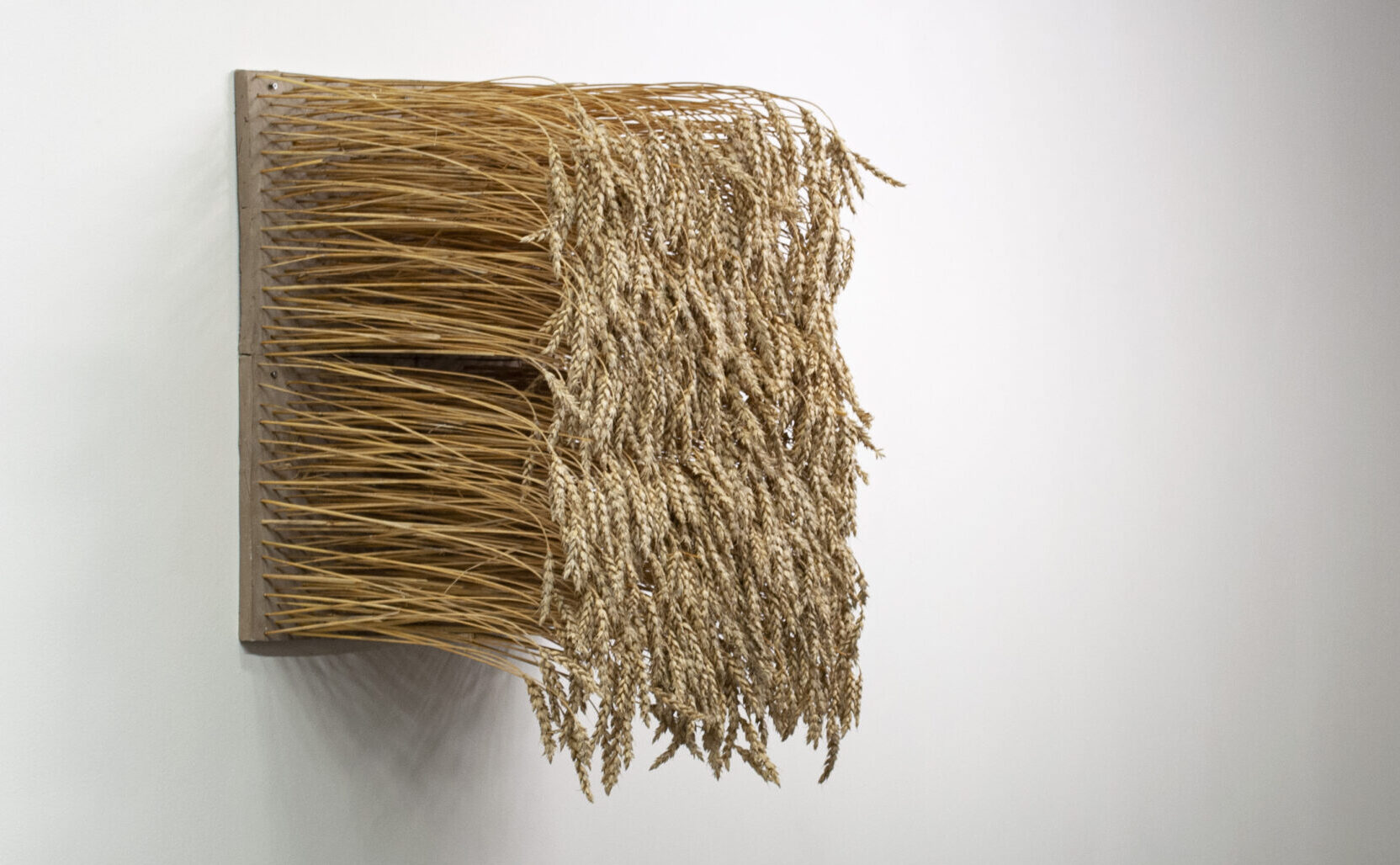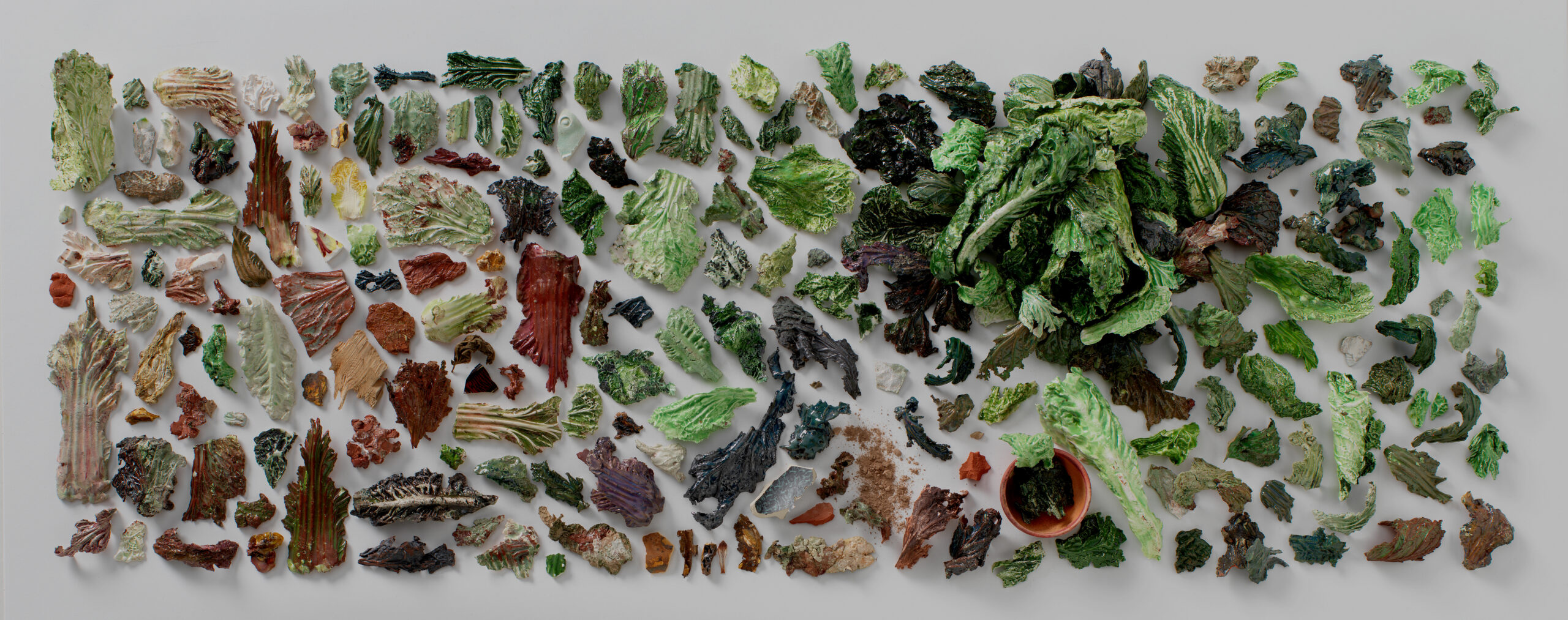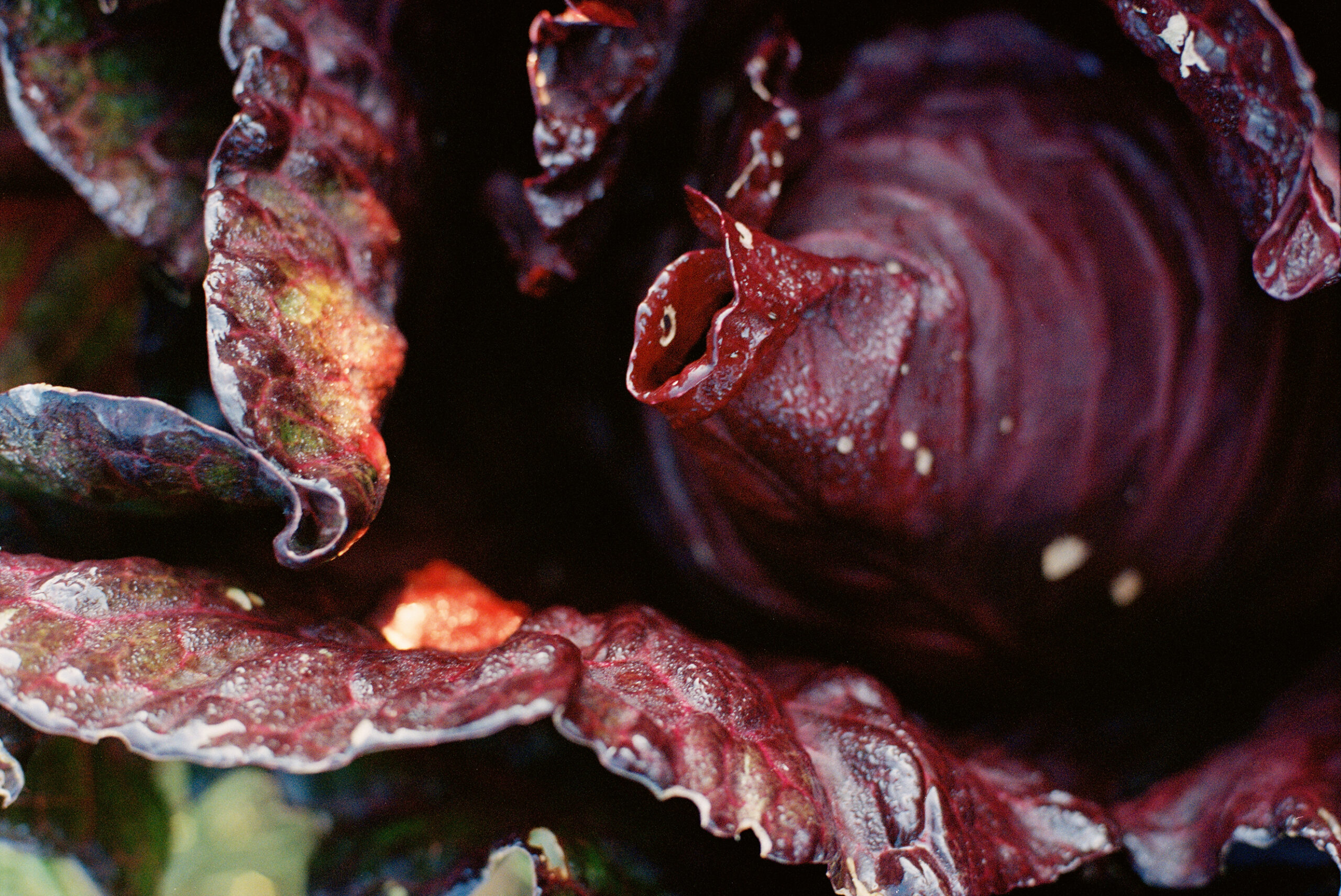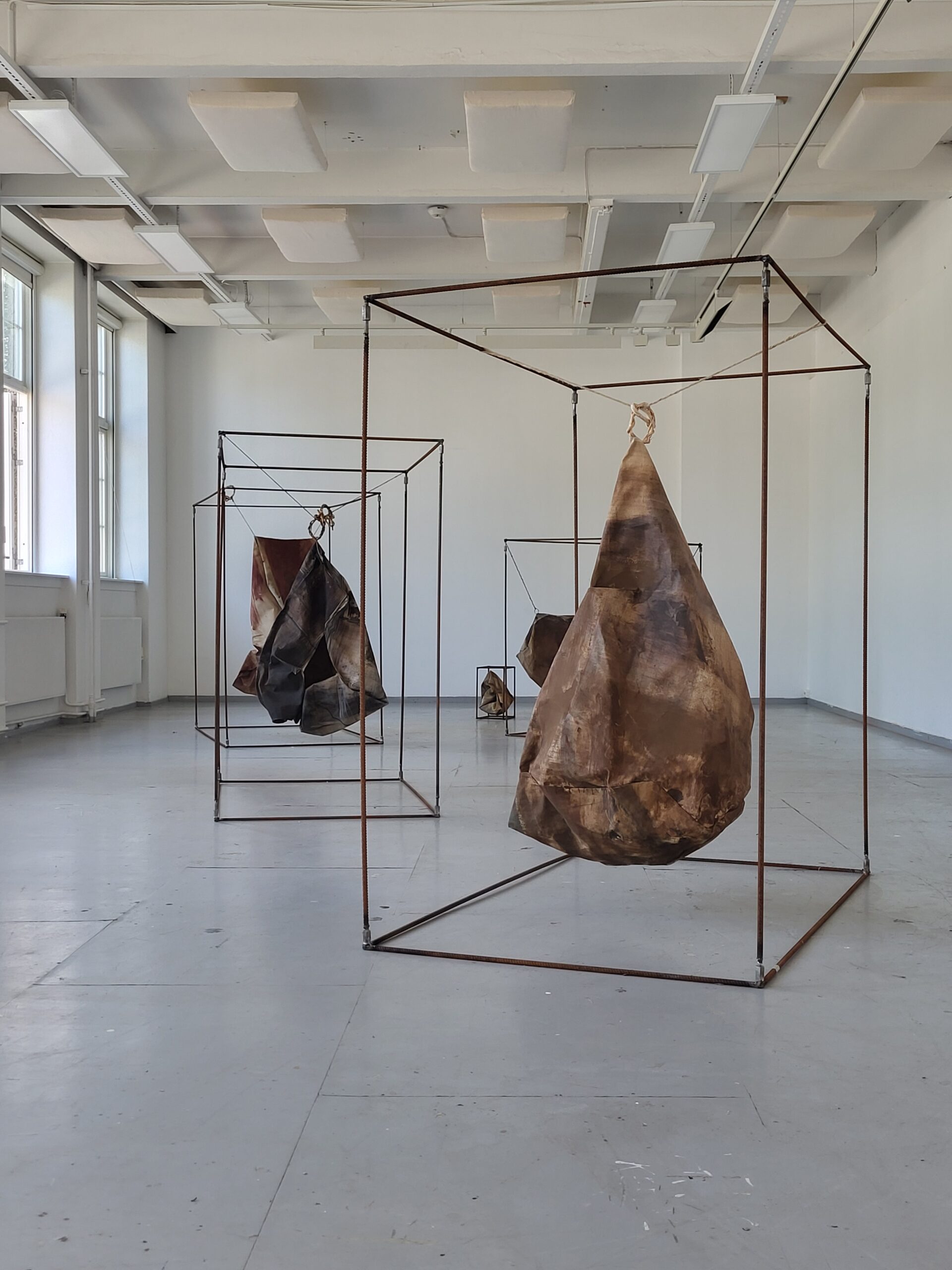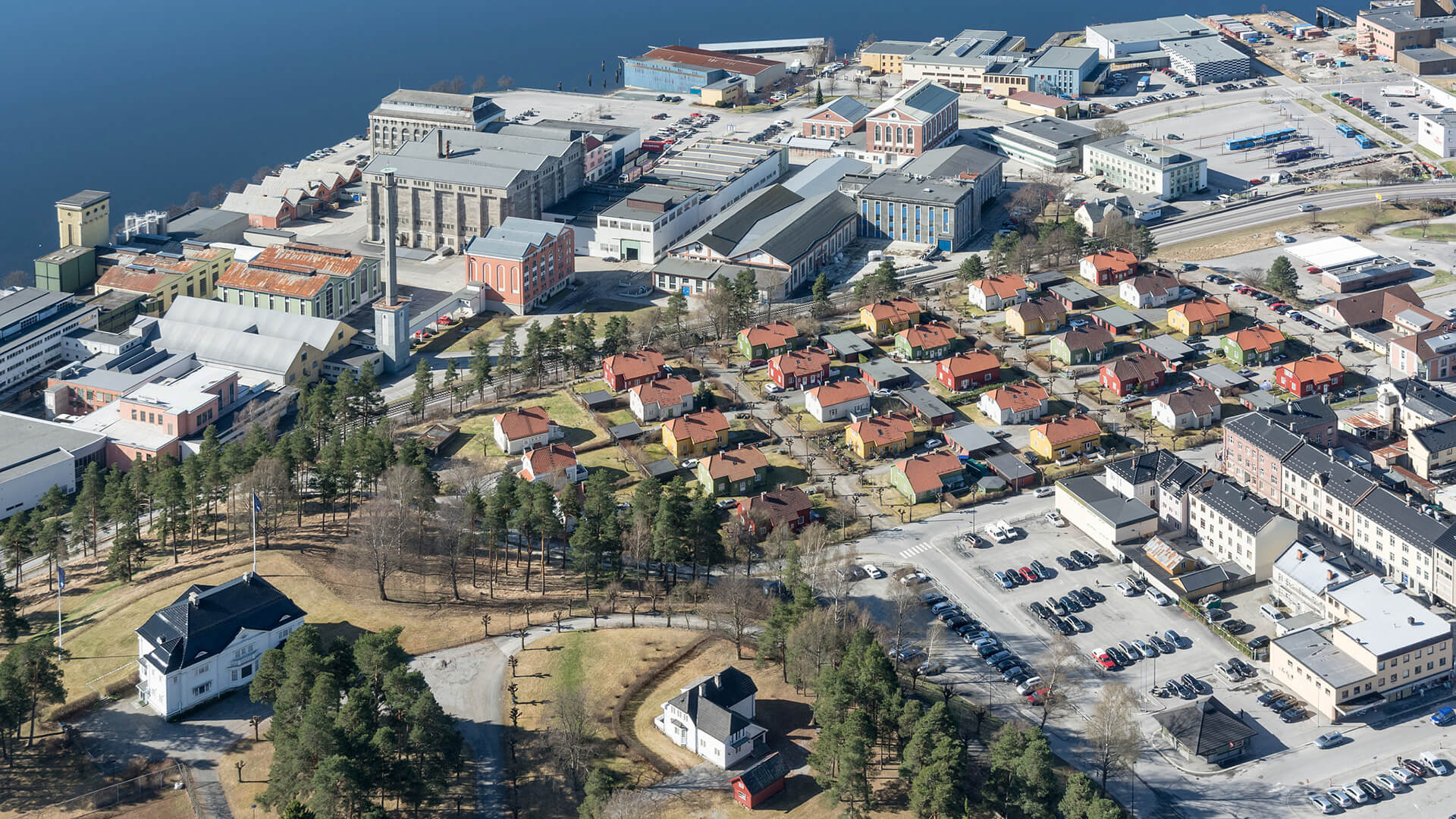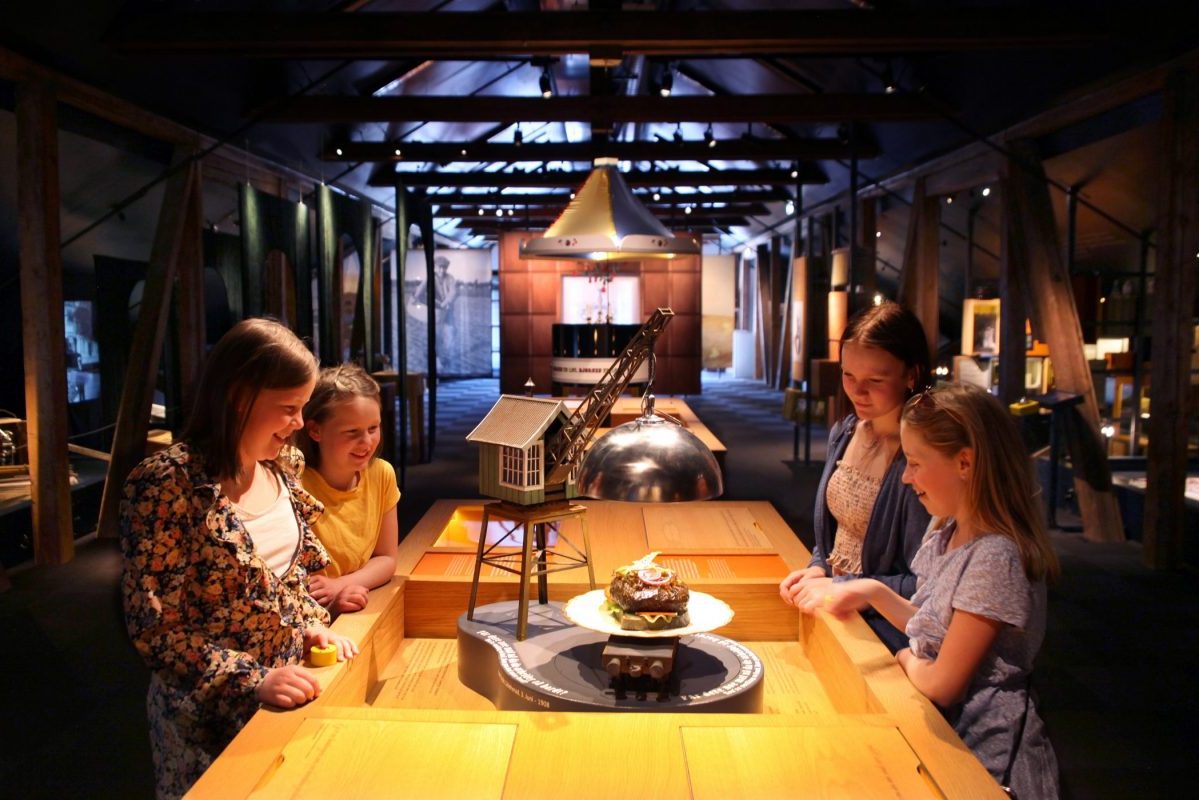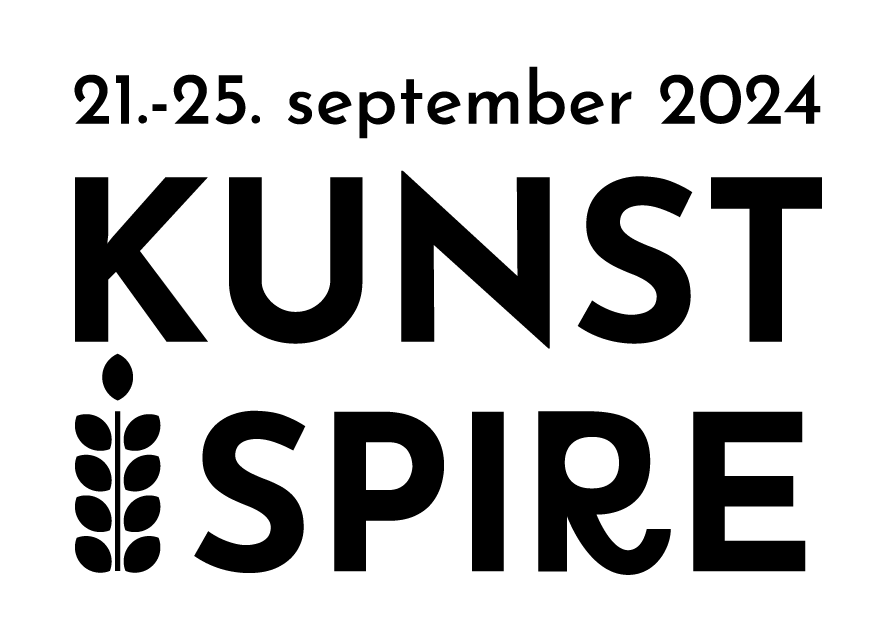In the photo series “Field,” Verena Winkelmann explores themes from organic farming. Over several years and seasons, Winkelman has photographed the fields near her home. There is something sensual about the images, with the surfaces of the vegetables evoking bodily associations.
In Toril Redalen‘s work, materials are central. She is concerned with where materials come from and how they take up space. The works in the exhibition examine the role of lettuce in the history of ceramic art, as well as lettuce’s existence as a plant, food, and as soil.
Veslemøy Lilleengen works with a wide range of materials and techniques, primarily within textiles, performance, and various forms of traditional craftsmanship. For the exhibition, Lilleengen has extracted earth pigments from soil samples collected in Telemark. She uses these in artworks inspired by, among other things, the district’s rosemaling tradition.
The British sound artist Justin Wiggan‘s works often have a health-promoting aspect. He has collaborated with the healthcare sector on several occasions to create various multisensory works. In the exhibition, Wiggan presents an entirely new interactive sound installation, where key books on organic farming decompose back into the earth, while the soil communicates with the audience.
